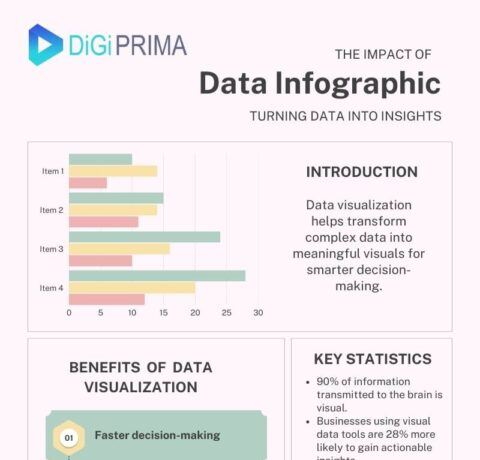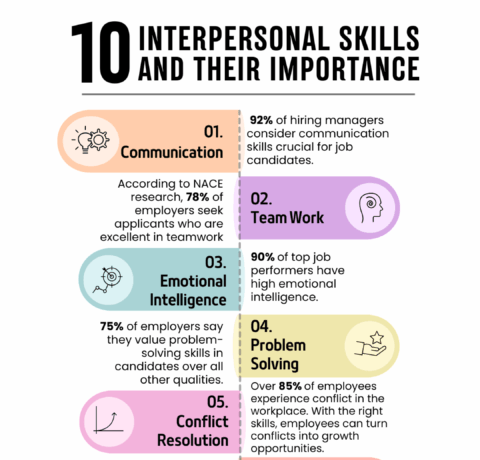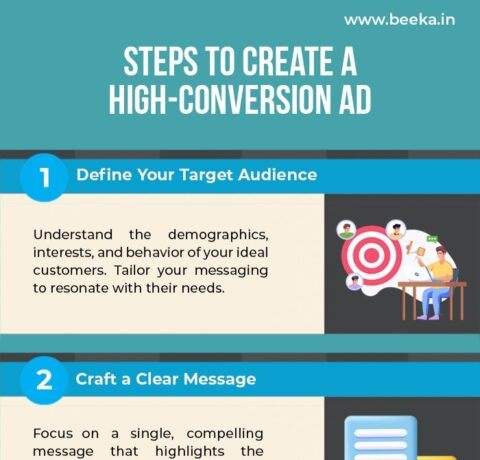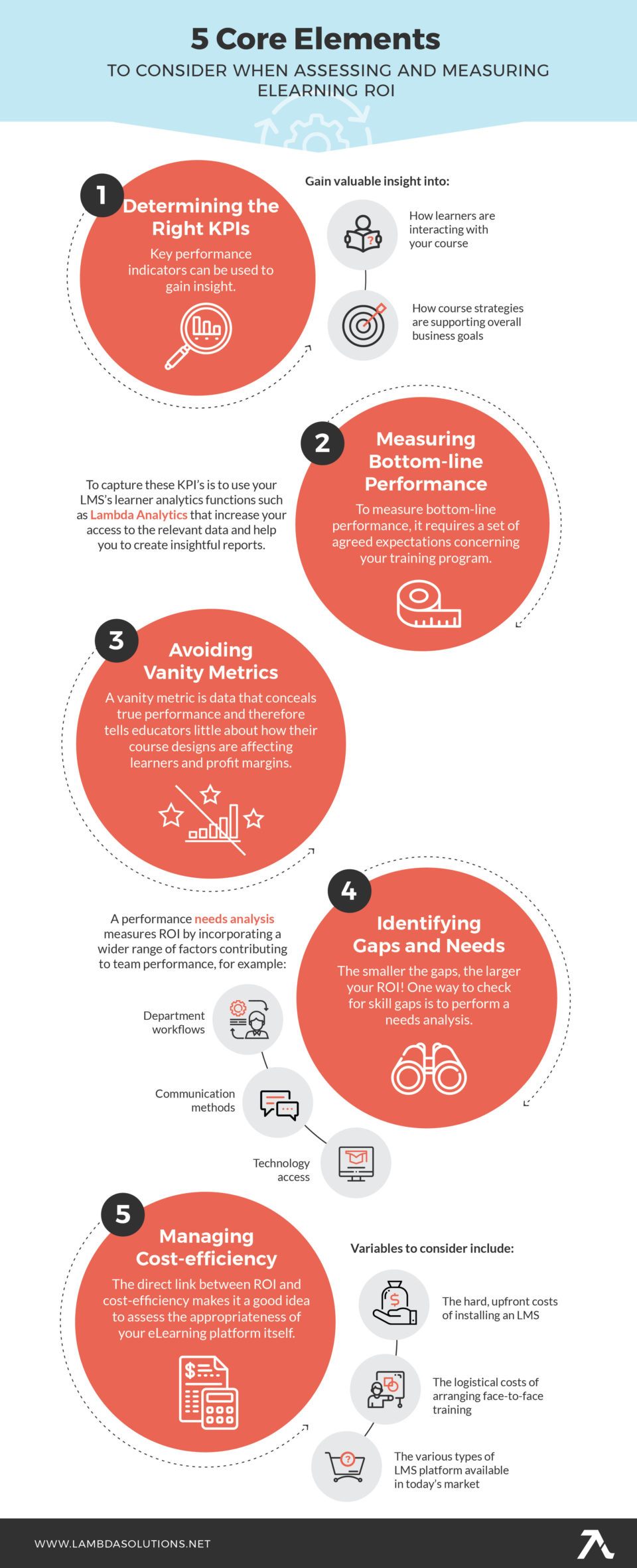How To Assess And Measure ROI For Your Organization-Infographic
5 Core Elements To Consider When Assessing And Measuring eLearning ROI
1. Determining The Right KPIs
Key Performance Indicators can be used to gain insight.
Gain valuable insight into:
- How learners are interacting with your course
- How course strategies are supporting overall business goals
2. Measuring Bottom-Line Performance
To measure bottom-line performance, it requires a set of agreed expectations concerning yoru training program.
To capture these KPIs is to use your LMS's learner analytics functions such as Lambda Analytics that increase your access to the relevant data and help to create insightful reports.
3. Avoiding Vanity Metrics
A vanity metric is data that conceals true performance and therefore tells educators little about how their course designs are affecting learners and profit margins.
4. Identifying Gaps And Needs
The smaller the gaps, the larger your ROI! One way to check for skill gaps is to perform a needs analysis.
A performance needs analysis measures ROI by incorporating a wider range of factors contributing to team performance, for example:
Department workflows–Communication methods–Technology access
5. Managing Cost-Efficiency
The direct link between ROI and cost-efficiency makes it a good idea to assess the appropriateness of your eLearning platform itself.
Variables to consider include:
- The hard, upfront costs of installing an LMS
- The logistical costs of arranging face-to-face training
- The various types of LMS platforms available in today's market







You can adjust your cookie preferences here.